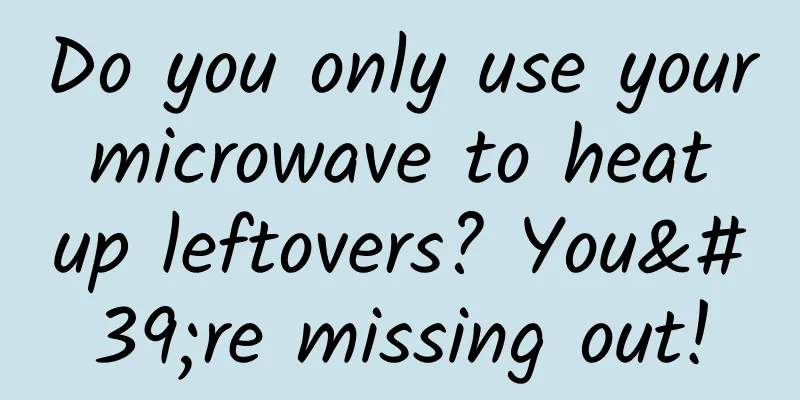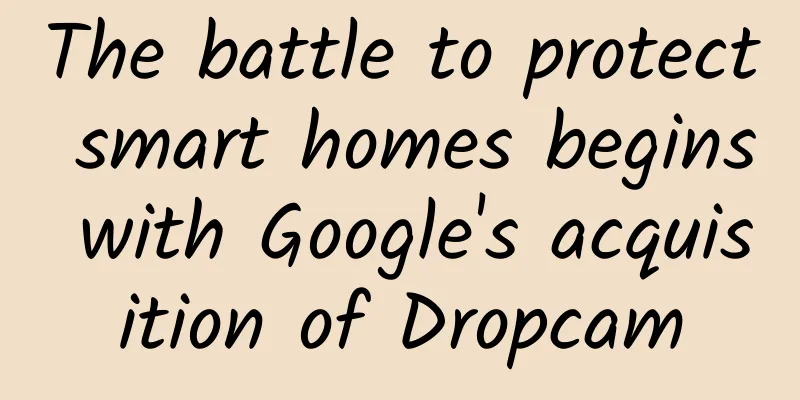Do you only use your microwave to heat up leftovers? You're missing out!

|
Microwave ovens, as lazy home appliances, bring convenience to people's lives, but they also seem to bring a lot of "uncertainty" factors - This time, we will tell you how to use a microwave oven through real-life tests! Biscuits, potato chips, melon seeds, peanuts... these crispy snacks should be eaten right after opening. If you can't finish them in one go, the delicious snacks will become moist and soft when you want to eat them next time. You want to eat it but it's hard to swallow, and it's a pity to throw it away... Don't worry, the microwave is here! Microwave it on medium-low heat for 1 minute, then let it cool. You deserve this delicious and crispy snack! When cooking with dried foods like mushrooms, black fungus, and kelp, I always forget to soak them in advance. It takes at least an hour to soak them temporarily. It’s so frustrating! It is easy if you use a microwave. Just immerse it in cold water and microwave it at high temperature for 2 to 3 minutes. It will be easily soaked. Do you always fail to fry eggs in a hurry for breakfast? Are you afraid of oil splashing on your face? Is it too troublesome to wash the pan? There’s nothing to be afraid of with a microwave: brush some oil on the dish, crack an egg, poke a few holes in the egg yolk with a toothpick, and cook on medium heat for 1 and a half minutes to get a perfect poached egg! If you want to eat some whole grains, it takes at least 20 minutes to cook corn, which is time-consuming and laborious! Using a microwave is completely different. Sprinkle water on the corn husk and cook it on high heat for 5 minutes until it is fully cooked. In one word: fast! When steamed buns or dumplings are heated, the bottom always becomes sticky and wet, affecting the taste. In fact, this is also a small problem: sprinkle some pure water on the cold steamed buns and cook them on medium heat for 1 minute, and they will become super soft. You don’t have to worry about them being sticky anymore! Having said the tips, improper operation of the microwave oven can easily lead to safety hazards, such as the following: Chinese people don't lie to Chinese people! If you use a microwave to heat food with a shell, such as eggs, chestnuts, etc., it will really explode! Because food with shells will be heated unevenly during the heating process, excessive pressure will be generated inside. Once the limit is exceeded, the pressure will be released and an explosion will occur. Even boiled eggs that have been peeled are not good! A colleague of mine once heated a boiled egg in the microwave. It was fine when he took it out, but it exploded when he bit it. He was caught off guard! His lips were severely injured and swollen for a long time. Never heat takeaway packaging or boxed milk with tin foil or aluminum foil in the microwave. If heated for too long, they will catch fire! The correct way to do it is to remove the packaging, pour out the milk and then heat it up. Don't be bothered by it! Metal reflects microwaves, and heating them will reduce their thermal efficiency and cause uneven heating. When microwaves come into contact with metal, high-frequency electric sparks will be generated, which can even damage the microwave oven's lining in severe cases. When heating in a microwave oven, ceramic and glass tableware should be used first, and be careful not to use tableware with gold or silver borders; stainless steel lunch boxes should never be heated in a microwave oven! We all know that ordinary plastic containers will deform and even release toxic substances when heated. But most common takeout and lunch boxes are made of plastic. Can these be heated? Among the above plastic materials, No. 5 PP (polypropylene) and some No. 7 materials, such as PPSU (polyphenylene sulfone resin), can be used for microwave heating. However, PPSU is often used in baby bottles and water bottles. Items with relatively narrow necks are not recommended for microwave heating, as they may expand due to pressure and explode. Some cling films have slogans such as "Can withstand high temperatures of 180°C" and "Do not use in microwave ovens" marked on the outer packaging, so you should check them carefully. If heating is required, you need to choose PE, PVDC, or PMP cling films that are resistant to high temperatures and marked as suitable for microwave use. Finally, all the contents mentioned in the article are summarized into two pictures. You are welcome to press and hold to save! If the elderly at home are using the microwave, you can also print it out and stick it on the side for easy viewing at any time~ What other tricks or tips do you have for using microwave ovens in your life? Feel free to leave a message and share! Editor | Yuanyuan Design | Sour Technical Support | KengKeng Source: Dad Review |
<<: Who is the baby? The correct way to calculate the dog's age
Recommend
B-side operations: What are the operating methods for different products?
What are the operating methods for products at di...
Super comprehensive! Comparison of design differences between Android apps and iOS apps
Editor's note: For the same app, why are the ...
A brief discussion on Baidu, 360, Sogou, and Soso search bidding promotion
Friends in the bidding industry may have multiple...
Zhu Baiban: "How to Create an Account for Live Streaming"
Zhu Baiban's resource introduction of "Ho...
National Bureau of Statistics: Energy production in September 2022
In September , the production of raw coal, crude ...
An Incomplete Guide to Programmer Interviews
[[151466]] It is difficult for programmers to fin...
E-commerce operation: 2 ways to play social e-commerce
This question comes from a supplementary question...
Phison Financial Report: In January 2024, Phison's consolidated revenue was NT$5.086 billion, a year-on-year increase of more than 75%.
According to recent news, Phison Electronics'...
PwC: Drones will soon replace $127 billion in human labor
For many people, drones are a wonderful gift or a...
Perfect Diary’s Methodology for Explosive Products
Brands such as Perfect Diary , Hua Xizi, and Cha ...
[Practical Tips] Six major application markets teach you how to run the Android market!
Some optimization techniques for the domestic And...
Baidu launches smart mini-programs, which industries will benefit from it?
When it comes to mini programs , Baidu, which sta...
What are the techniques for promoting soft articles on Weibo?
Nowadays, the Internet industry is developing rap...
Why are Huawei and Alibaba employees boycotted for switching to Microsoft? What is the specific situation?
Why are Huawei and Alibaba employees boycotted fo...









